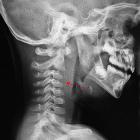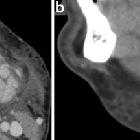Intratonsillar abscess



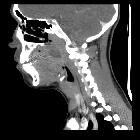

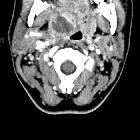



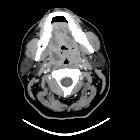


Intratonsillar abscesses, or simply tonsillar abscesses, are uncommon complications of tonsillitis in which pus accumulates focally in the parenchyma of the tonsil (within the capsule).
Epidemiology
They can occur in both children and adults, but their incidence is not well-defined. In a recent series from one institution, intratonsillar abscesses were 7-9% of identified cases of intratonsillar or peritonsillar abscesses .
Clinical presentation
Patients present with sore throat and fever for several days . Compared to patients who have peritonsillar abscess, those with intratonsillar abscess are less likely to have otalgia, trismus, or voice changes .
Pathology
It is postulated that with swelling of the tonsil and alterations in lymphatic flow, the crypts are obstructed, accumulate inflammatory debris, and form an abscess .
Radiographic features
CT
Contrast-enhanced CT demonstrates an enlarged palatine tonsil with a central area of hypoattenuation and surrounding rim enhancement . There is tonsillar tissue surrounding the abscess, distinguishing this from peritonsillar abscess, but the two entities can coexist .
MRI
MRI demonstrates a rounded lesion in the tonsil with the following appearance :
- T2: central hyperintensity and hypointense rim
- T1 FS C+: central non-enhancement and rim enhancement
The peritonsillar tissues also have high signal on T2 weighted images and T1 fat suppressed postcontrast images, consistent with tonsillitis/peritonsillitis.
Treatment and prognosis
Compared to peritonsillar abscess, incision and drainage or needle aspiration of intratonsillar abscess is less likely to be successful if attempted . Moreover, recurrence after antibiotic therapy is less common with intratonsillar than peritonsillar abscesses . Thus, many otolaryngologists prefer medical management over procedural drainage for intratonsillar abscess , while some attempt drainage in some scenarios .
Differential diagnosis
Siehe auch:
und weiter:

 Assoziationen und Differentialdiagnosen zu Peritonsillarabszess:
Assoziationen und Differentialdiagnosen zu Peritonsillarabszess:
